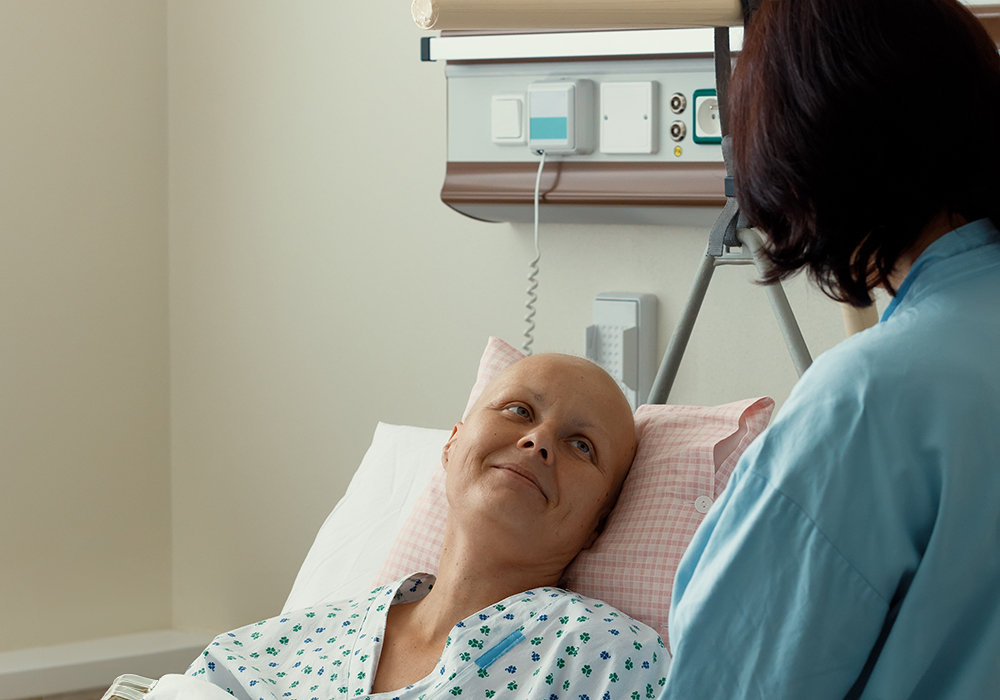Cervical cancer rates have dropped more than 90% among women who received the human papillomavirus (HPV) vaccine, according to the results of a Swedish study published in the New England Journal of Medicine. Global health leaders are calling it a milestone study.
Nurses serve a critical and proven role in reducing the burden of cancer and improving the lives of patients with cancer. Yet, for millions of people across the globe, access to health care is not a given, and nurses don’t have the educational and occupational support to perform to their full abilities.
In June 2020, the U.S. Food and Drug Administration granted accelerated approval to lurbinectedin (ZepzelcaTM) for adults with metastatic small cell lung cancer (SCLC) whose disease has progressed on or after platinum-based chemotherapy. The approval adds a second choice for patients who experience treatment-resistant SCLC progression, who previously had only topotecan as an option.
Nutritional status is one aspect of cancer care that may often be overlooked. Patients, particularly those with esophageal, gastric, pancreatic, and non-small cell lung cancers, have increased nutritional requirements because of their high resting energy expenditure. Treatment side effects further hinder a patient’s desire and ability to eat, creating a wider gap between energy intake and energy needs and placing patients with cancer at high risk for malnutrition.
In the United States, breast cancer is the most commonly diagnosed cancer in women. One in eight women will develop invasive disease in their lifetime with approximately 270,00 new cases diagnosed in the United States in 2019. Caucasian women have the highest incidence rate, whereas African American women are most likely to die from the disease. The five-year survival rate is 91%, with an estimated 3.8 million breast cancer survivors living in the United States.
Current events have given us an opportunity, and sometimes even a necessity, to rethink our well-being approaches. But developing a self-care plan doesn’t have to be overwhelming when you use a familiar method like the American Nurses Association’s nursing process.
Prostate cancer is one of the most common cancers treated with radiotherapy (RT). Conventional RT for low-risk patients usually involves 40–45 treatments given over eight or nine weeks. Several studies suggest that hypofractionated RT—fewer treatments but with a higher dose per treatment—may produce a similar survival benefit. When two treatments have similar survival outcomes, the decision process looks at symptom profiles, quality of life, and cost.
Surgical treatment for breast, gynecologic, prostate, lymphoma, melanoma, or head and neck cancers puts patients at risk for developing secondary lymphedema at any point in the remainder of their life. Studies show that as many as 10%–40% of patients with breast cancer may experience breast cancer–related lymphedema.
Supporting oncology nurses in administering cancer treatments and nurse scientists in conducting research during the COVID-19 coronavirus pandemic were priority topics for the ONS Board of Directors’ August 25, 2020, meeting by conference call. After approving its board goals for 2020–2021, the ONS Board made the following decisions that you should be aware of as an ONS member and practicing oncology nurse.
I was born in India but came to the United States of America when I was 16 years old to be with the rest of my family. Having been an American citizen for 20 years, I have called this country home for most of my life. However, I still feel like an outsider and the workplace is no exception.





